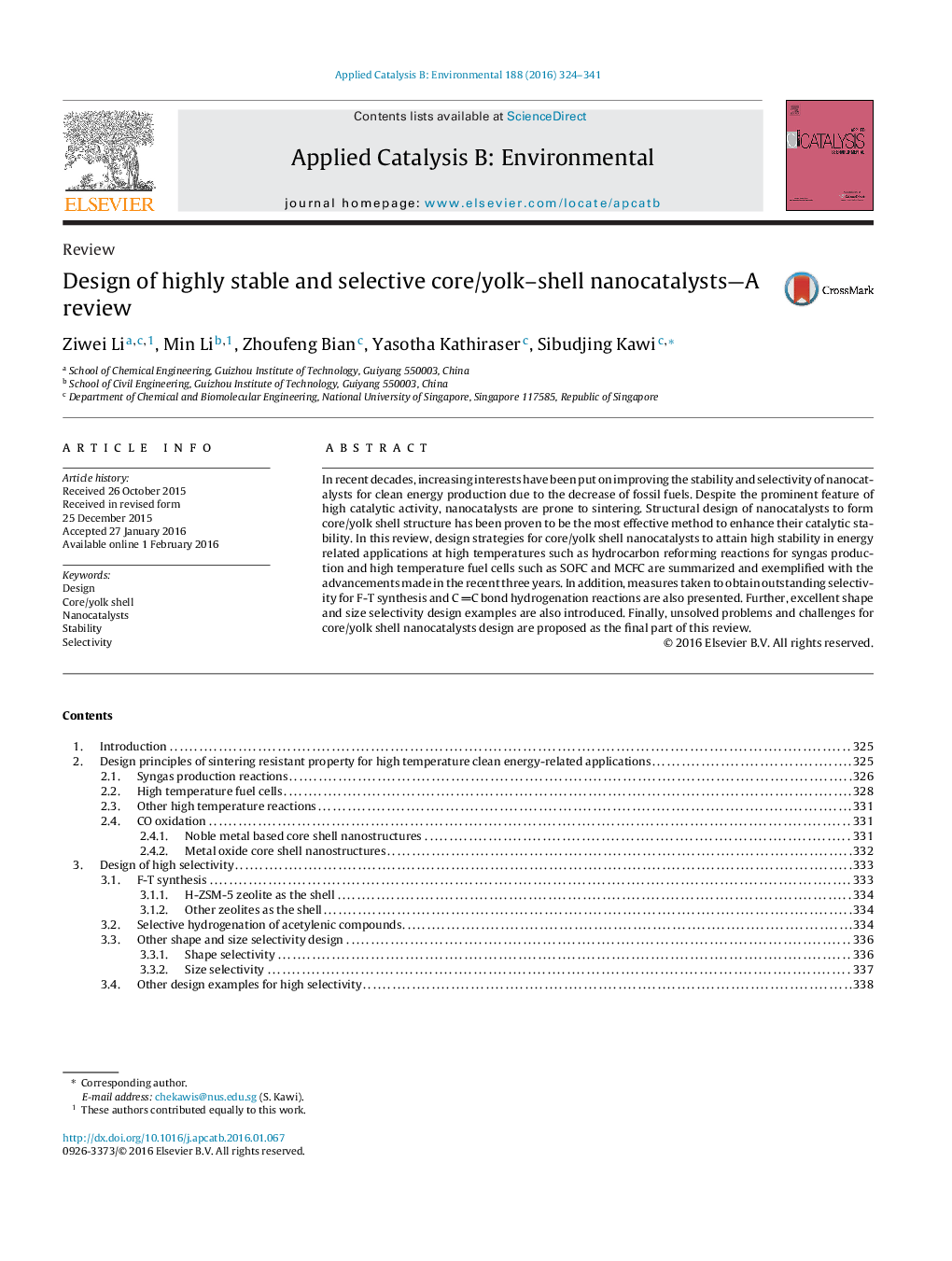| کد مقاله | کد نشریه | سال انتشار | مقاله انگلیسی | نسخه تمام متن |
|---|---|---|---|---|
| 45025 | 46393 | 2016 | 18 صفحه PDF | دانلود رایگان |
• Design strategies for core/yolk shell nanocatalysts to attain high stability in energy related applications were reviewed and summarized.
• Measures taken to obtain outstanding selectivity for F-T synthesis and C C bond hydrogenation reactions were also presented.
• Excellent shape and size selectivity design examples were also introduced.
• Unsolved problems and challenges for core/yolk nanocatalysts design were proposed.
In recent decades, increasing interests have been put on improving the stability and selectivity of nanocatalysts for clean energy production due to the decrease of fossil fuels. Despite the prominent feature of high catalytic activity, nanocatalysts are prone to sintering. Structural design of nanocatalysts to form core/yolk shell structure has been proven to be the most effective method to enhance their catalytic stability. In this review, design strategies for core/yolk shell nanocatalysts to attain high stability in energy related applications at high temperatures such as hydrocarbon reforming reactions for syngas production and high temperature fuel cells such as SOFC and MCFC are summarized and exemplified with the advancements made in the recent three years. In addition, measures taken to obtain outstanding selectivity for F-T synthesis and C C bond hydrogenation reactions are also presented. Further, excellent shape and size selectivity design examples are also introduced. Finally, unsolved problems and challenges for core/yolk shell nanocatalysts design are proposed as the final part of this review.
Figure optionsDownload as PowerPoint slide
Journal: Applied Catalysis B: Environmental - Volume 188, 5 July 2016, Pages 324–341
